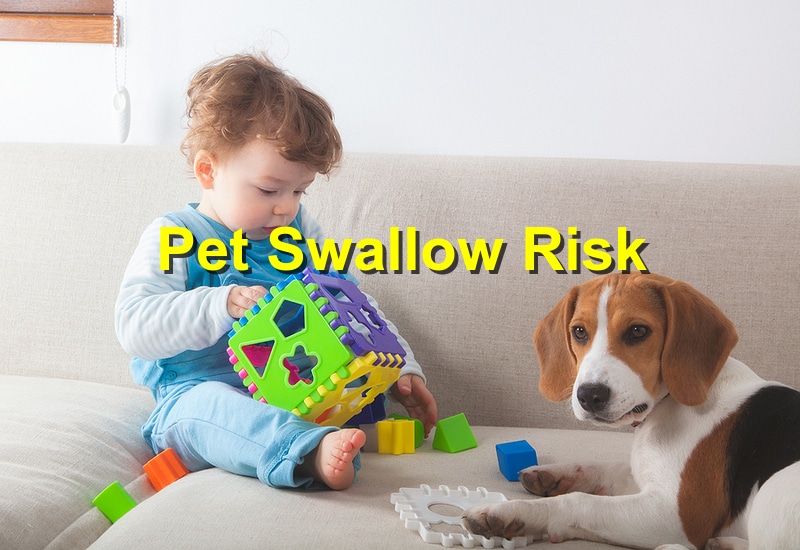Pet Emergency: What to Do When Your Pet Swallows Something Dangerous

Pets are naturally curious—and that curiosity can sometimes lead to big trouble. From socks and small toys to toxic foods and household chemicals, pets often swallow things they shouldn’t. If your dog, cat, or other pet ingests a dangerous object or substance, it’s important to act fast. Your quick thinking can mean the difference between a scary incident and a serious medical emergency.
This guide will walk you through the signs that your pet may have swallowed something harmful, what steps to take, and when to seek immediate veterinary help.
Common Items Pets Swallow
Dogs, especially puppies, are known for eating just about anything. Cats, too, might ingest string, ribbon, or toxic plants. Common culprits include:
Non-toxic but dangerous if swallowed:
- Socks, underwear, or gloves
- Small toys or parts of toys
- Bones (cooked or raw)
- Rubber bands or hair ties
- Coins
- String, thread, or dental floss
Toxic substances:
- Chocolate
- Grapes and raisins
- Xylitol (in sugar-free gum or candy)
- Human medications (ibuprofen, Tylenol, antidepressants)
- Cleaning products
- Certain plants (e.g., lilies, poinsettias, sago palm)
In some cases, the object may cause a physical blockage, while in others, toxicity can affect your pet's organs.
Signs Your Pet Swallowed Something Dangerous
The symptoms can vary based on what was ingested, but watch for these common signs:
Physical Obstruction Signs:
- Vomiting or retching
- Loss of appetite
- Abdominal pain or bloating
- Lethargy or restlessness
- Straining or inability to poop
- Drooling excessively
Toxic Ingestion Signs:
- Vomiting or diarrhea
- Tremors or seizures
- Excessive drooling or foaming
- Weakness or collapse
- Pale or yellow gums
- Irregular heartbeat
If your pet exhibits any of these symptoms—especially after chewing on or disappearing with an item—take action immediately.
What to Do Immediately
Step 1: Stay Calm and Assess
Panicking won’t help your pet. Try to determine:
- What they swallowed
- How much they consumed
- When it happened
If it’s safe, remove any remaining pieces from their mouth or the surrounding area.
Step 2: Do NOT Induce Vomiting Unless Instructed
For some substances (like sharp objects or caustic chemicals), vomiting can cause even more harm. Always consult your vet or an animal poison control expert before attempting this.
Step 3: Contact a Professional
Call your veterinarian or Animal Poison Control at:
📞 ASPCA Poison Control: (888) 426-4435 (available 24/7, fees may apply)
Have this information ready:
- Pet’s weight, breed, and age
- What they swallowed (and how much, if known)
- Time of ingestion
- Symptoms you’ve observed
They’ll tell you whether to bring your pet in immediately or monitor them at home.
When to Go to the Emergency Vet
You should head to an emergency clinic right away if:
- Your pet is choking or can’t breathe
- They’re vomiting repeatedly or showing signs of distress
- You suspect a toxic substance was ingested
- The object was sharp, string-like, or large
- They have a swollen abdomen or seem in pain
Bring any packaging or remnants of the item with you—this can help the vet with diagnosis and treatment.
At the Vet: What to Expect
Your vet may perform:
- X-rays or ultrasounds to locate the object
- Blood tests to check for toxins or organ damage
- Induced vomiting (if safe and early enough)
- Endoscopy (a scope used to remove small items)
- Surgery in serious blockage or internal injury cases
The quicker your pet receives care, the better their outcome.
How to Prevent Future Incidents
The best way to handle a pet emergency is to avoid it altogether. Here are a few tips:
🐾 Pet-Proof Your Home:
- Store food, medication, and chemicals out of reach
- Avoid leaving socks, toys, or string within easy access
- Use childproof latches on cabinets
🧸 Choose Safe Toys:
- Avoid small, breakable parts
- Supervise playtime with chewable or squeaky toys
- Discard damaged toys immediately
🍫 Be Careful with People Food:
- Keep chocolate, gum, and alcohol far from reach
- Educate guests and children about pet-safe foods
🏷 Know What’s Toxic:
- Familiarize yourself with pet-toxic plants and products
- Use pet-safe cleaning solutions when possible
Conclusion
No pet owner ever wants to face an emergency, but accidents happen. If your pet swallows something dangerous, staying calm, acting quickly, and seeking professional advice can make all the difference. Learn the signs, keep emergency numbers handy, and pet-proof your environment to prevent future incidents.
Your pet relies on you to protect them—and with the right knowledge and care, you can help them stay safe and healthy, no matter what curiosity brings their way. 🐾🩺
References: Happy Paws Vet
https://braseltonervet.com/?p=4494
Comments
Post a Comment